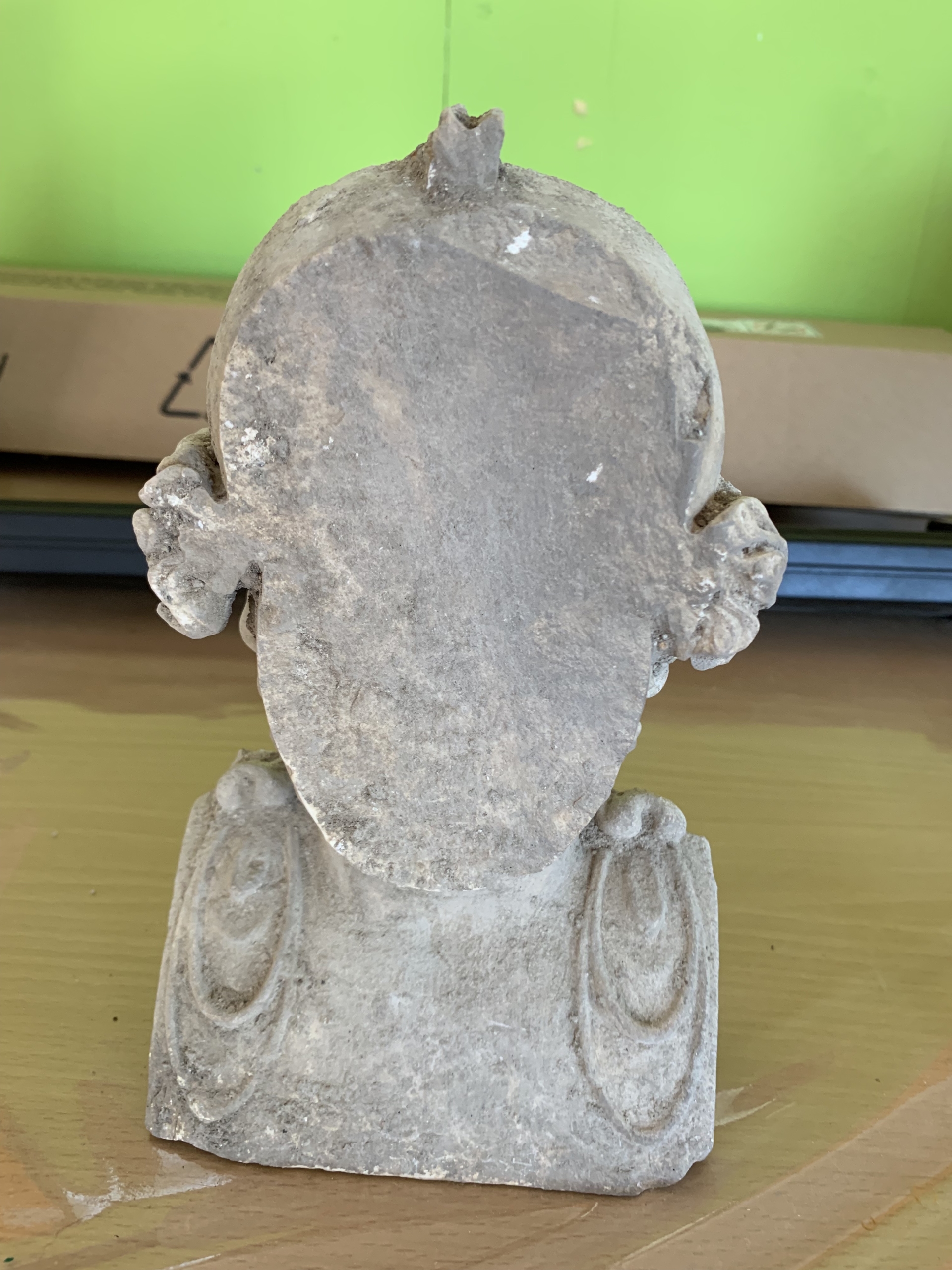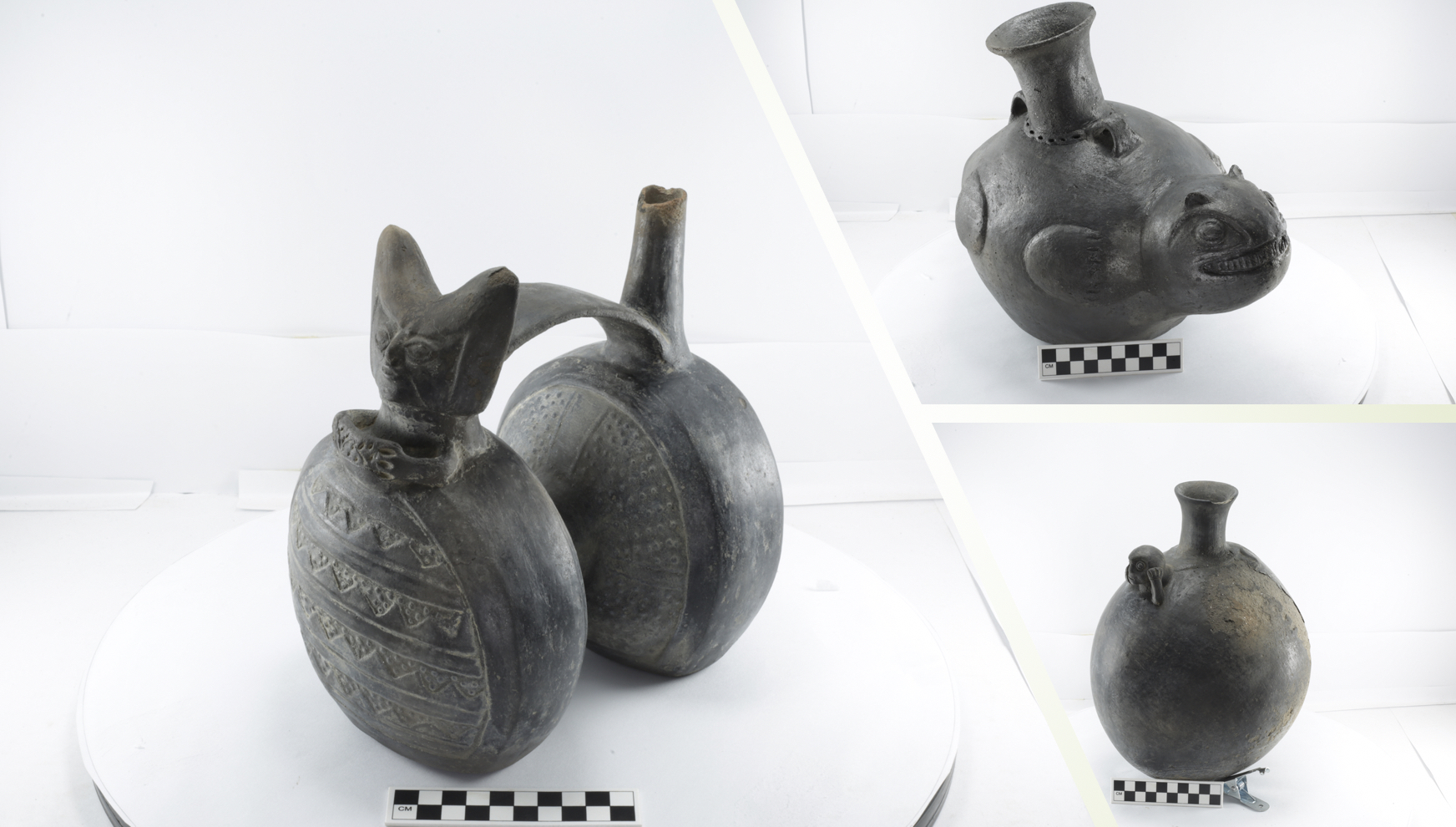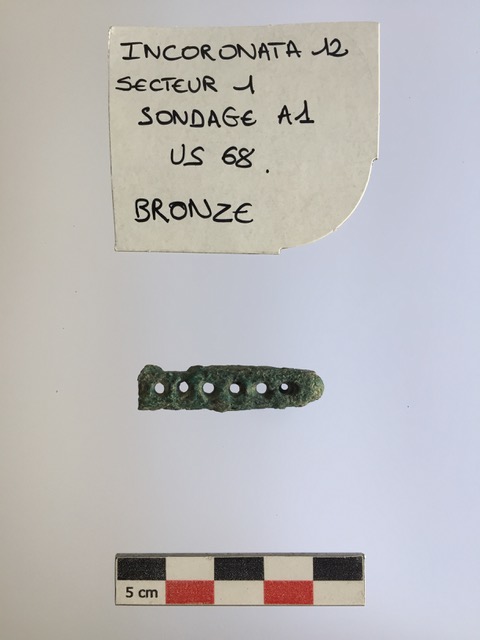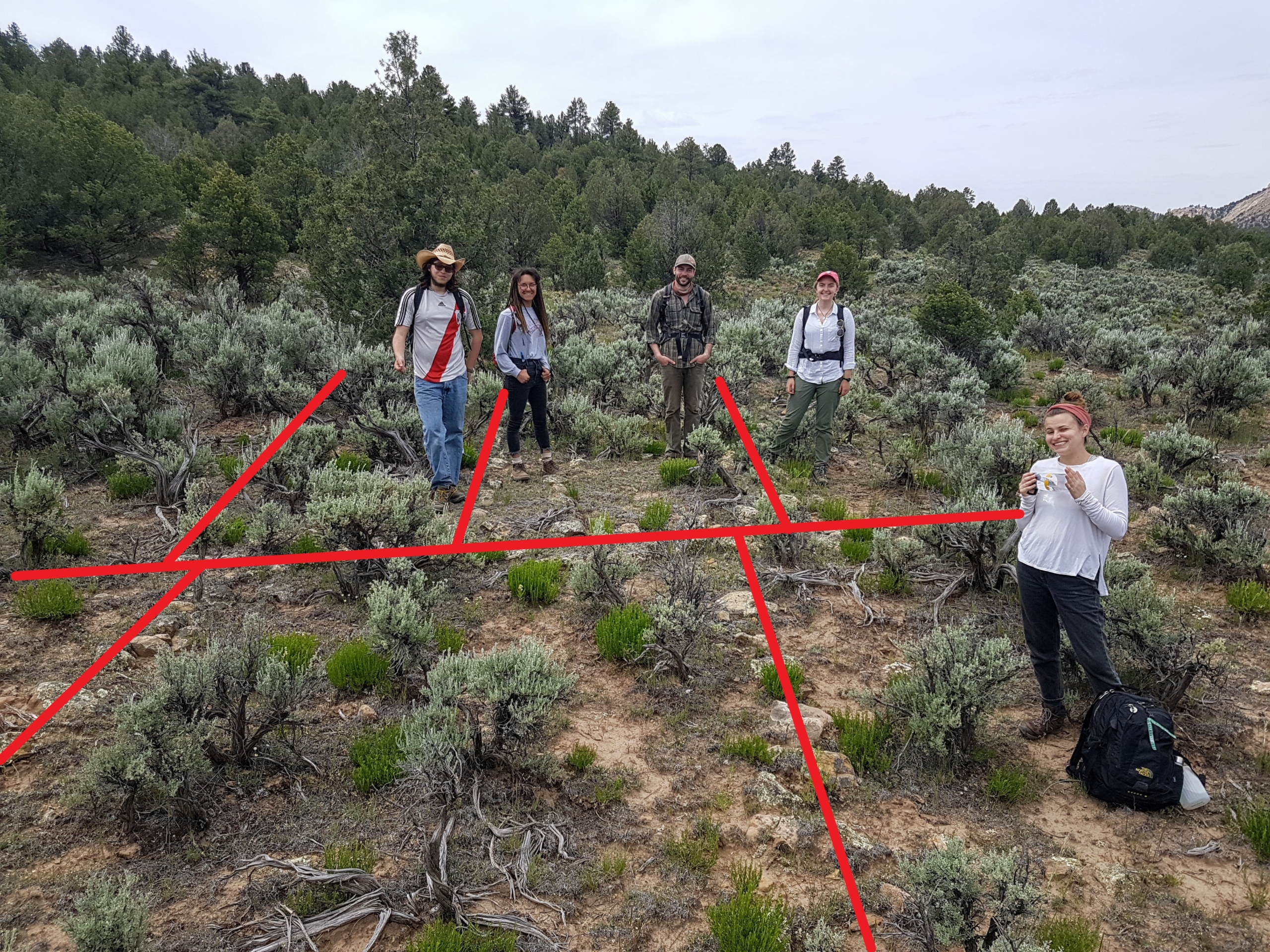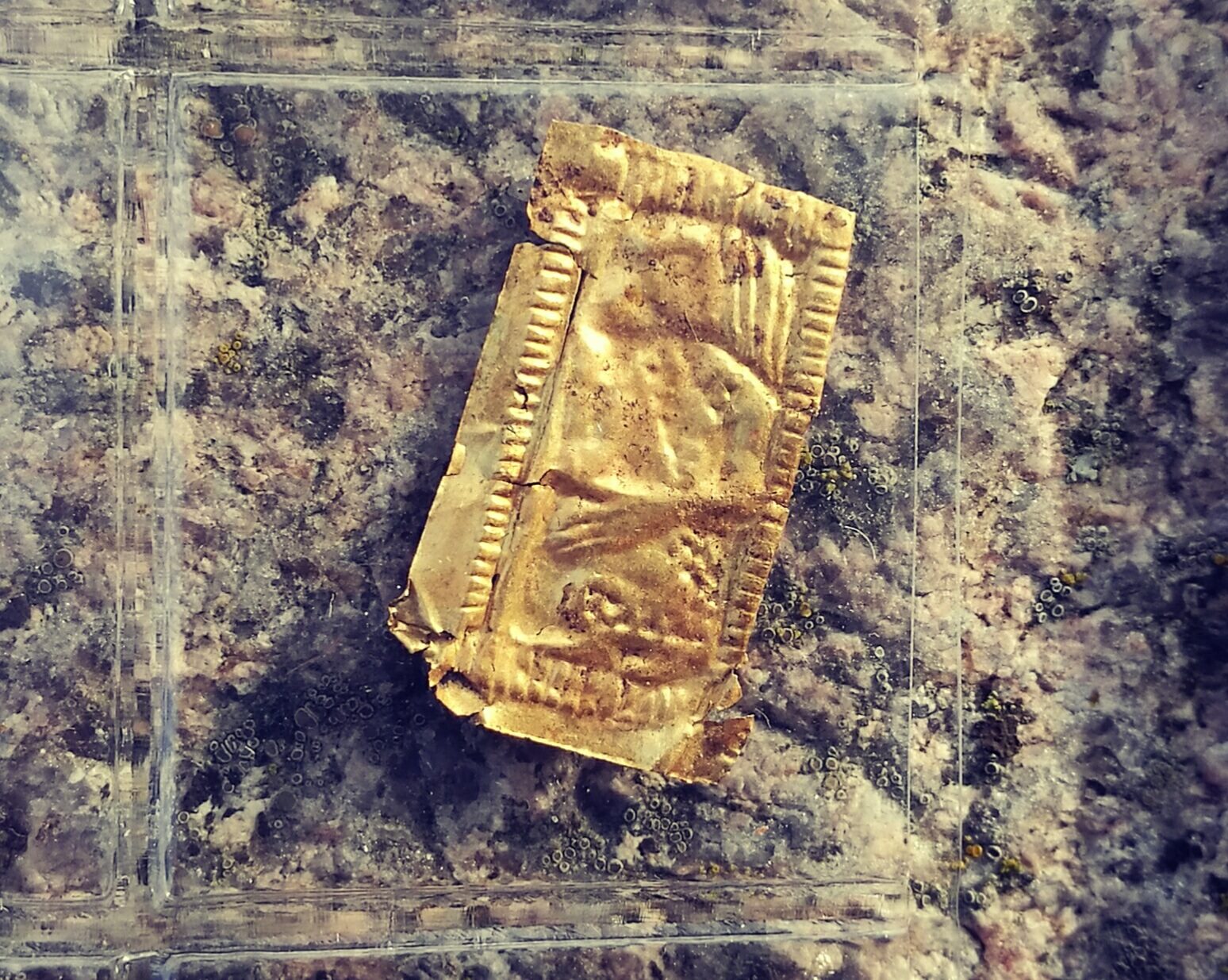From US-CO:Amache:
“My favorite artifacts, and the ones that excite me the most, are those that tell a story. One artifact we find are these homemade coal scoops made of scrap metal and wood. Coal scoops were used to carry coal to heat residential barracks [at the WWII Japanese internment camp]. At Amache, resources were scarce, income limited, and conditions inhospitable, but people were resilient and creative. Modified objects like these reflect adaptations to life in an incarceration center.”- April Kamp-Whittaker, Arizona State University, Assistant Director at Colorado: Amache Japanese American Confinement Camp
From Italy-Vulci:
“This is a fragment of a Roman herma (Pictures 1 & 2) and a marble head of a Silenus – part of a Roman fountain (Picture 3).”
-Dr. Maurizio Forte, Department of Classical Studies, Art, Art History & Visual Studies at Duke University, Director at Italy: Vulci Etruscan and Roman Archaeology
From US-CT:Mohegan:
“This is a United States penny dating to 1802, known as a “draped bust” penny based on the image on the head side. It is cut into a half penny. This was found at a nineenth-century Mohegan homestead, dug last summer.”
– Kelly Ferguson, Royal Ontario Museum, Research Assistant at Connecticut: Mohegan Collaborative Indigenous Archaeology
From Peru-Nepeña:
“These are some Chimú ceramics found in the Chimú cache from Mound 2. Ceramics are depicting the Moon Goddess, a sea lion, and a monkey.”
-Jenna Hurtubise, Department of Anthropology at University of Alabama, Assistant Director at Peru: Nepeña Pre-Colombian Archaeology
From Italy-Incoronata:
One intriguing object that only found its way into the wealthiest female graves of Incoronata and other Early Iron Age cemeteries in southern Italy was a little bronze instrument made of coils called a calcophone. Calcophones are made of two perforated bronze bars between which a series of tight bronze coils are fixed (originally, they would have been held in place by wooden sticks or wire). They are believed to be percussion instruments, held in one hand and hit with the other.” ⠀
– Dr. Giulia Saltini Semerari, Museum of Anthropological Archaeology at University of Michigan, Co-Director at Italy: Incoronata
From US-NM:Puebloan Rebels of the Southwest:
“In the Gallina culture region of the American Southwest, ‘it’s not about what we find, it’s about what we find out’.” The folks who lived in this area invested most of their labor in grand social, political, and economic experiments and seemed to have cared more about the value of the community and of their labor and less about the value of things in the same way that we do nowadays.
So for us, our cool find from 2019 was not a thing, it was a thing these folks did. During pedestrian survey, we ran across some agricultural oddities that conventional archaeological histories said shouldn’t exist at this time period and at the scale we found them – Grid gardens! While these may seem particularly unexciting on the surface, grid gardens are sophisticated examples of permaculture terraforming. They’re essentially greenhouses without the glass and framing.
The folks who made these gardens 700 to 900 years ago had an advanced understanding of the complex interactions between geological processes, environmental variations, and agricultural needs. The highland environments of the American Southwest often required a trade-off where lower elevations allowed for a longer, frost-free growing season with minimal water and higher elevations allowed for a shorter, frost-free growing season with more water. So you either could get enough time to grow your crop or enough water. Ancient farmers, really scientists, developed grid gardens as a way to sustainably modify their landscape. The rocks store enough solar energy to increase the ambient temperature of the fields and increase the number of frost-free days while also increasing the amount of moisture in the soil by decreasing how much of it evaporates. So, our coolest find for 2019 was the presence of grid gardens, earlier than generally expected in this region, that demonstrate ancient experimentation and agricultural technological advances.”
-Dr. Lewis Borck, Anthropology at New Mexico Highlands University, Director at New Mexico: Puebloan Rebels of the Southwest
From Denmark:Sorte Muld:
“When we are digging, we always get the question “are you finding gold?” – and of course the answer is yes! 32 delicate shiny gold foil figurines appeared this year. But the best finds always appear just before closing time. The day before closing we picked up a large and beautiful gold foil figure and a small horse figure on the surface of the culture layer. These finds are of great value, both because of their immediate appeal, but also due to their potential for dating the layers in which they were located. So we are indeed happy and satisfied – and are looking forward to welcoming you to Sorte Muld next year!”
-ArchaeoBalt, Denmark: Sorte Muld Viking Archaeology (photo credit: Bartosz Świątkowski)




